October 2021

Aavik Acoustics RIAA R-180 Phono Preamplifier Review
Excellent transparency and musicality deliver musical bliss.

In July of 2021, I reviewed Aavik Acoustics’s I-180 integrated amplifier, D-180 DAC, and S-180 streamer / network player. In the review, I practically raved about the sonic quality of all three components, so it was no surprise that Aavik earned a hard-fought Enjoy the Music.com 2021 Blue Note Award within our September 2021 issue.
The three Aavik components bestowed a 2021 Blue Note award are not cheap, but neither are they extravagantly priced at $7200 each. That is certainly reasonable for high-end audio components that I thought were some of the best I’ve ever heard within and above their price range. Not only that, but these three components took a surprisingly noticeable step up in their sonic performance when used together.
Contributed
I’m willing to admit that their good looks might have initially contributed to me liking them, especially when the three components were stacked on top of each other – an Aavik stack. Yet, even when used individually, I was impressed by their transparency to the source. Individual sonic traits were tough to pin down. My listening notes ended up analyzing the sound quality of the program material I was listening to rather than the Aavik audio components being reviewed in my system.
It should be no surprise to anyone that Aavik Acoustics’s RIAA R-180 phono preamplifier had similar traits to those pieces I previously reviewed. However, as our high-end systems improve, system matching becomes more of an issue. Many believe that no other audio component relies on other equipment used in our systems other than the phono stage. Yes, characteristics such as transparency to the source are essential, but for example, if the phono preamp is not a good match for one’s cartridge, all bets are off.

Design
The cabinet design of the R-180 looks the same as the other Aavik components I’ve previously reviewed, which means that this phono stage uses front panel controls. The menu-driven controls on its front panel allow for changing the gain and loading of the R-180 on the fly. Giant, red LED characters on its front panel, some of them stretching from the bottom to the top of the cabinet, made it easy to read, even from across the room.
Assumed
I assumed that many of the traits Aavik described in their literature and website were typical audio hyperbole. I could tell from the first record that I played through the R-180 that I was wrong about that. Aavik claims that this phono preamp’s RIAA section is close to perfect. Their website says it uses a “discrete, floating, balanced, ultra-low noise bipolar input circuit,” This led to an even quieter input section by “paralleling several transistor pairs.” I didn’t quite know what this meant, other than that the R-180 is quiet.
And quiet it is.
Gain
But I still wasn’t totally convinced. That’s because this phono stage provides 65 dB of gain for moving coil (MC) phono cartridges, which is a relatively low output for a phono preamp’s maximum setting, one that I’ve rarely seen in an MC phono preamp. Since I use a phono cartridge with very low output and speakers with a very low-efficiency rating, the Aavik Acoustics R-180’s noise-reducing circuitry had better work very well. This is because the volume on my system would have to be raised very high to compensate for the phono preamp’s relatively low gain. With the R-180’s signal-to-noise ratio of 94 dB, this was a good start.

Familiar
Those who have read my latest reviews should be familiar with the system and dedicated, acoustically treated listening room I use to test analog gear such as this Aavik RIAA R-180 phono preamplifier. It is the same system I used for much of the time when reviewing the three Aavik components in my previous Aavik Acoustics review.
I’ll try to be brief for those unfamiliar with my “reference” system or who don’t remember all of it (even though I’m often unsuccessful at being brief). A Basis Audio V turntable sits on the top shelf of an Arcici Suspense equipment rack. It uses a Tri-Planar 6 tonearm with a 2020 Blue Note Award winning Top Wing Suzaku “Red Sparrow” phono cartridge mounted on its headshell. With only .2mV of gain, calling this Top Wing cartridge “low-output” is accurate.
Since the Top Wing phono cartridge only has an output of .2mV, the Aavik R-180’s 65 dB of gain was just enough to set the system’s volume to a “normal” listening level, with very little to spare. Luckily, the system’s 250 WPC Pass Laboratories X250.8 power amplifier is a high-current beast, having no problem driving a pair of Sound Lab Majestic 545 electrostatic monoliths to a sufficient volume. Augmented by a pair of SVSound SB16-Ultra subwoofers relieved the power amp of sub-bass duties with their onboard 1500-Watt amp powering their 16″ drivers.
Snap
Using the Aavik R-180 was a snap to set up, as are most phono preamps with front panel controls. It took less than a minute to choose its gain of 65 dB and set the load at 200 Ohms. Besides the loading and gain settings, on its front panel is a standby control and mute. Its navigation/menu button will access loading, gain settings, display brightness, automatic display shut down, and access to the currently installed firmware.

Like most phono preamplifiers, the Aavik R-180’s rear panel is uncluttered. It has an IEC power cord input next to its on/off switch, an RS-232 input for firmware updates, two trigger switches to switch on the phono preamplifier when other components are connected to it.
Last but not least, the rear panel of the R-180 has a pair of RCA inputs and outputs. Initially, I was disappointed that there were no XLR outputs on this phono preamplifier. Most of my equipment is connected with interconnects terminated with XLRs. Not only would XLR terminals possess physical properties worthy of a high-end audio system, but they would also boost the signal 6 dB (every little bit counts when using a low-output moving coil cartridge).
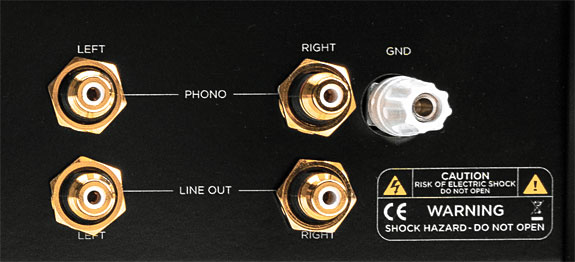
Upon learning about my disappointment in not having XLRs on the rear panel of the R-180, Aavik’s Michael Børresen, a chief designer at Aavik Acoustics, explained to me that the lack of XLRs on their phono stage is because they get non-grounded (floating) balanced signals from the left and right channels. They enclose these signals in a common shield/ground that is also connected to parts of the tonearm and even the chassis of the phono cartridge via the ground connection on the rear of the R-180. If they were to use XRLs, they risk generating a ground loop, thus creating noise. He finishes with, “These ground loops are fully avoided in our setups, which in return can deliver one of the quietest phono setups on the market.” This makes sense, and I feel foolish for getting so upset about it. Aavik apparently cares very much about noise in the system!
Sure, I had to set my preamplifier’s volume near its maximum level for many selections, but the rest of my system was quiet enough for that not to have been a problem. Plus, the black background of the R-180 was undoubtedly a positive trait; at times, I could not tell whether or not the phono preamp or linestage’s mute circuit was activated or not.
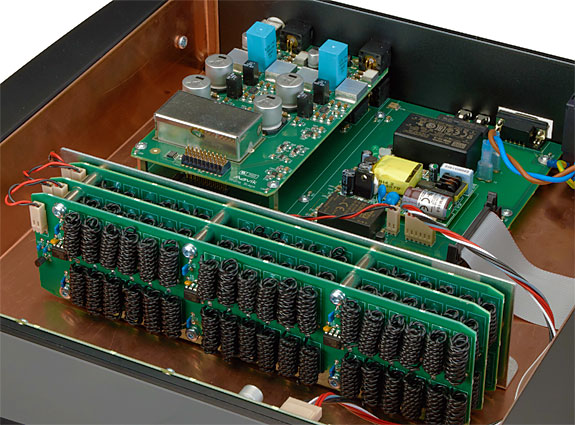
Sonic
I could not find fault with the Aavik Acoustics RIAA R-180 phono preamplifier’s sonic performance. The only drawback I could find was when I was not using it in my system! I’m not trying to be funny. In the past I’ve auditioned several more expensive, more electronically advanced phono preamps. I have very positive memories of using these phono preamps, and the Aavik R-180 came close to having many characteristics of these expensive phono preamps. This is especially true of this Aavik’s black background.
When listening to records through the R-180, I was taken aback by its level of transparency. The only “sound” of this phono preamp was speculative, as it seemed to be extracting more of the phono cartridge’s signal and converting it into a musical signal. In doing that, its frequency response seems to be more extended than I was accustomed to, its soundstage more 3-dimensional, more expansive, and extended further behind the front wall of my listening room. Images within its soundstage seemed more lifelike, with characteristics of individual voices, instruments, and sounds within its huge soundstage replicating what was contained within the grooves of the record, or at least what the phono cartridge was reading from those grooves.

Album
Miles Davis’ 1969 album In A Silent Way was his first foray into what many consider his “electric period,” after which his million-selling album Bitches Brew was released. By chance, when I was a teenager, In A Silent Way was the first “electric” Miles Davis album I ever purchased. I’ve gone through many pressings of this great album. I’ve even listened to an excellent sounding original Columbia ‘Six Eye’ pressing on my system. As good as this pressing sounded, this 1969 pressing was improved upon in 2012 when Mobile Fidelity Sound Labs released In A Silent Way on numbered, 180-gram vinyl.
Aavik Acoustics’ RIAA R-180 phono preamplifier and this Miles Davis album pressed by Mobile Fidelity seemed to be made for each other. The R-180’s silent background, combined with the lack of surface noise on this MFSL pressing, left only the tape hiss as background noise. The Aavik R-180 is proof that a component’s silent background increases the occurrence of positive traits from a recording that passes through it.
When I’m auditioning an unfamiliar phono preamplifier, its signal-to-noise ratio, that is, the lack of noise that it produces from the design of its internal circuits, is one thing. But just as important is the ability to suppress noise that is created from outside sources. Electromagnetic interference (EMI), radio signal interference (RFI), and even its cabinet’s susceptibility to vibrations caused by what comes from our speakers may cause extraneous noise.
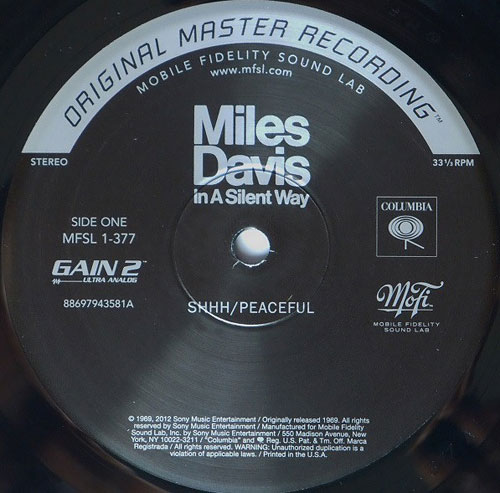
Sometimes I had to move either the phono preamp’s power supply or the phono preamp itself during an audition to lessen the noise coming through the speakers. That didn’t even occur to me during this Aavik phono preamp’s stay. It was dead quiet from day one, despite having to raise the volume of my linestage more than I usually do. This made it so I was able to hear “into” each recording I played through it. Including the “In The Silent Way” album. There are lots of details hidden underneath the octet of musicians that are playing on this masterpiece. There are, after all, three keyboardists on it, yet the large soundstage it rendered never sounded crowded, especially when listening through the R-180 phono stage, which was adept at separating these sounds and instruments.
When recording the In A Silent Way vinyl LP, Mr. Davis might not have thought about the often-misquoted Claude Debussy when he said, “Music is the space between the notes,” but this album might be the epitome of what he meant by that. At the time of its release, some called this album “space music.” This term became a double entendre, as the space between the notes made it at times seem as if it had no time signature, almost as much as some of it appears improvisational.
When I first heard it at a very impressionable age, it took me quite a while to appreciate what Miles and company were up to on this LP. Likely because it was hardly kid’s music. As I thought, “If he is being influenced by rock music, he isn’t listening to the same type of rock that I’m listening to.” As it turned out, we were.
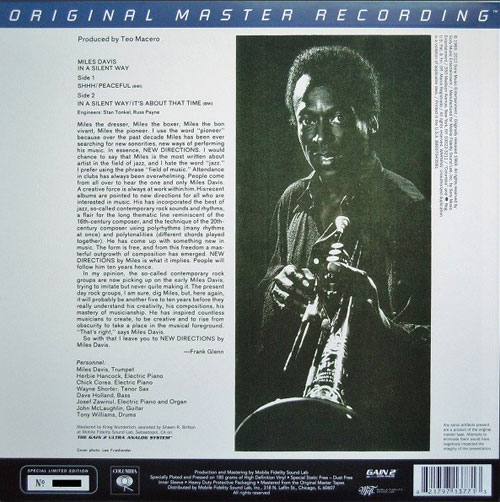
Aavik Acoustics R-180 was able to let me get inside the music, to hear the nuance, as drum stick brushed a cymbal, to listen to Miles play a note on his trumpet before his breath reached full saturation, and literally, the sound between the notes, as the reverb and echo filled the ambient space.
As I began to understand the musical genius behind it, I also started listening to releases from his brilliant musical sorcerers that played on this album. I discovered guitarist John McLaughlin’s pre-Mahavishnu period. I would pick up anything with drummer Tony Williams on it, and check out the electric keyboard offerings of Chick Corea, Herbie Hancock, and Joe Zawinul. I felt as if I was hardly taking a chance on the other who were on In A Silent Way. When I say, “This is one of my favorite albums,” the response from others is very often, “It’s mine, too.”
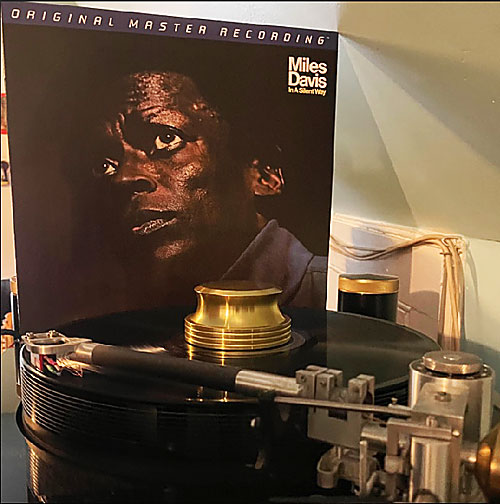
Typical
It is typical of components similar to the Aavik R-180, where I end up talking about the music as much as, or sometimes more than the component itself. The transparency and sheer musicality of the R-180 demonstrate that the music is what it’s all about. When the high-end audio component creators have the design acumen to pull it off, I can easily imagine that they have the same things in mind. A love of music and a love of music reproduced with the utmost reality given the amount of money on hand or a price point they are targeting.
The Aavik Acoustics R-180 made my records sound like music because it got out of the way of the phono cartridge’s signal that it was boosting. I wasn’t hearing the Aavik R-180 phono preamplifier; I didn’t even hear my phono cartridge, at least not much, as it is one of the best I’ve ever heard and the best I’ve ever had in my system. I was hearing the music on the record.
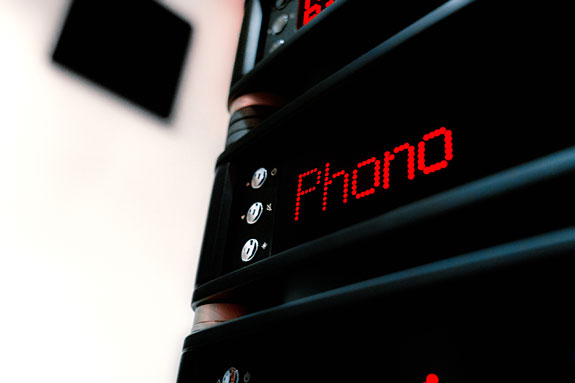
Lucky
We are a lucky bunch of audiophiles, being alive in this era of technical achievements. Because of this, more often than not, we get what we pay for. That’s one of the reasons why good high-end audio equipment is so damn expensive. In the case of the Aavik RIAA R-180 phono preamplifier, one does get what they pay for. And more. The R-180 isn’t the most expensive preamplifier I ever reviewed. When I began my review, I assumed it cost around $10,000. After discovering it actually cost $7200, I was very surprised. Still, $7220, it isn’t inexpensive, but I bet very few audiophiles will be disappointed when hearing it within their music system. To me, that seems impossible.
| Tonality |  |
| Sub–bass (10Hz – 60Hz) |  |
| Mid–bass (80Hz – 200Hz) |  |
| Midrange (200Hz – 3,000Hz) |  |
| High Frequencies (3,000Hz On Up) |  |
| Attack |  |
| Decay |  |
| Inner Resolution |  |
| Soundscape Width Front |  |
| Soundscape Width Rear |  |
| Soundscape Depth |  |
| Soundscape Extension Into Room |  |
| Imaging |  |
| Fit And Finish |  |
| Self Noise |  |
| Value For The Money |  |

Check out Enjoy the Music!
See many great reviews by Enjoy the Music.com at this link.
Specifications
Type: Solid-state stereo phono stage
Frequency Response: 20Hz to 20kHz
Phono: Floating RCA stereo pair
Maximum Input: 5mVrms
Gain: 65dB @ 1 kHz
Load-Impedance: Adjustable from 50 to 10k Ohm
Output: Unbalanced RCA
Distortion: <0.005%
THD at 1kHz: 0.5mV input
Output Impedance: 120 Ohms
Aavik Noise Reduction: Active Tesla coils = 36
Active Square Tesla Coils = 104
Dither Circuitry: Five
Dimensions: 4″ x 15″ x 15″ (HxWxD)
Weight: 11.9 pounds
Price: $7200
Company Information
Aavik Denmark
9000 Aalborg
Denmark
Voice: 45 40 51 14 31
E-mail: sales@aavik-acoustics.com
Website: Aavik-Acoustics.com
North American Distributor
Hi-Fi Centre
433 Carrall Street
Vancouver, BC
Canada V6B 6E3
Voice:(604) 688-5502
E-mail: info@hificentre.com
Website: HiFiCentre.com














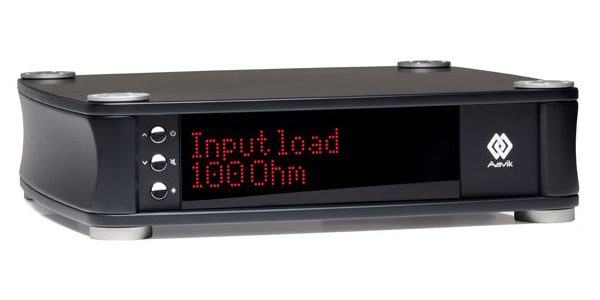
Want to join discussion?
Feel free to contribute!